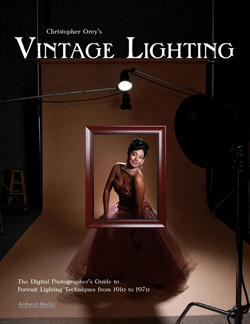Newsletter
Sort By: Post Date TitlePublish Date
|
Jun 13, 2013
|
Jun 13, 2013 |
First Published: Jul 01, 2013
|
May 20, 2013
|
May 20, 2013
|
May 20, 2013
|
May 17, 2013 |
First Published: Jun 01, 2013
|
Apr 22, 2013 |
First Published: May 01, 2013
|
Apr 22, 2013
|
Apr 22, 2013
 On The Cover
On The Cover


 In his latest book, Vintage Lighting (Amherst Media, 128 pages, $34.95; ISBN-13: 978-1-60895-221-2), pro photographer Christopher Grey shows how to capture the lighting techniques of bygone eras with today’s cameras, light sources and postproduction tools. Spanning the period 1910 through 1970, from Edwardian through “Hollywood” to Pop and the Sixties, he shows in imagery and text how to recreate the many lighting styles, poses and props this exciting period in portraiture produced, finishing up with some digital processing techniques to help you enhance your images even more. In this excerpt, we look at his take on the Edwardian Era.—Editor
In his latest book, Vintage Lighting (Amherst Media, 128 pages, $34.95; ISBN-13: 978-1-60895-221-2), pro photographer Christopher Grey shows how to capture the lighting techniques of bygone eras with today’s cameras, light sources and postproduction tools. Spanning the period 1910 through 1970, from Edwardian through “Hollywood” to Pop and the Sixties, he shows in imagery and text how to recreate the many lighting styles, poses and props this exciting period in portraiture produced, finishing up with some digital processing techniques to help you enhance your images even more. In this excerpt, we look at his take on the Edwardian Era.—Editor

 On The Cover
On The Cover Snap Art 3 from Alien Skin Software (
Snap Art 3 from Alien Skin Software (


